
And here is Elliott, making friends with one of the Three Little Pigs....
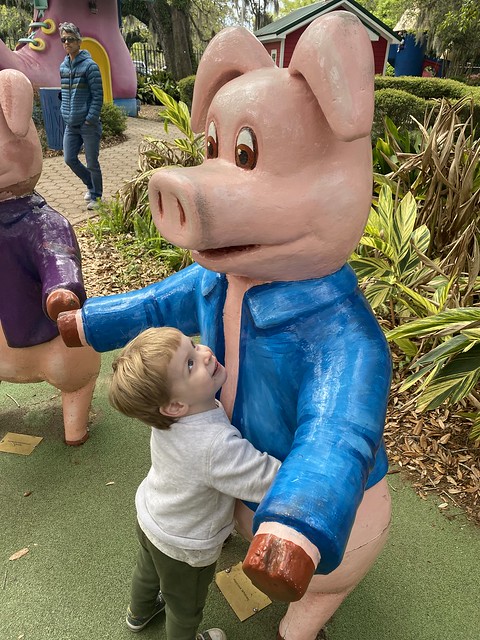
New Orleans City Park is a huge urban park, containing 1,300 acres. Besides Storyland, the park is home to the New Orleans Botanical Garden, the New Orleans Museum of Art, the Louisiana Children's Museum, the Carousel Gardens Amusement Park, a Sculpture Garden, Tad Gormley Stadium and various sports fields. It is also the site of the largest stand of mature live-oak trees in the world. One of the things I really wanted to accomplish during our visit to New Orleans was to get lots of pictures of live-oak trees with the infrared camera. So I'm going to apologize in advance for the large number of tree pictures that are about to show up.

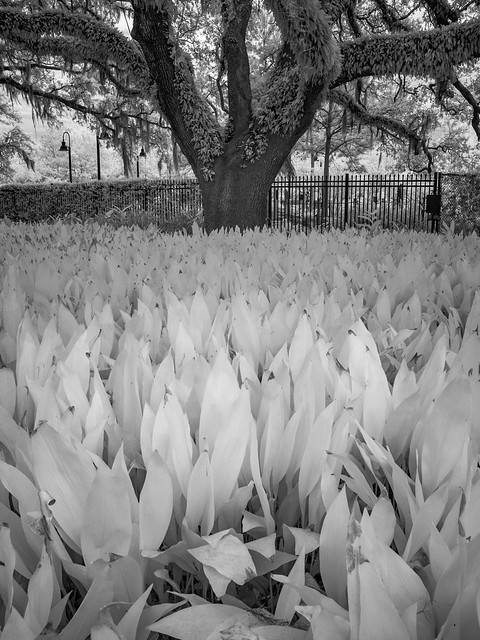
The park is just a short drive (or trolley-ride) away from downtown and the French Quarter. Prior to French colonization, Native Americans used to live on the lands that now make up City Park. The Chapitoulas and the Houmas had trade routes along Bayou St. John, which runs through the park. The bayou was used as a short cut between the Mississippi River and Lake Pontchartrain. In the 1700s, the land was developed into a sugar plantation.


This was also back in the time when dueling was one of the ways people solved their disputes. The garden behind St. Louis Cathedral had been one of the most popular locations in the city for duels, but in the 1850s laws against dueling were being enforced so people moved their quarrel to the city outskirts. That made the bayou in what is now City Park one of the most popular spots. An article published in 1892 wrote that "Blood has been shed under the old cathedral aisles of nature. Between 1834 and 1844 scarcely a day passed without duels being fought at the Oaks. Why, it would not be strange if the very violets blossomed red of this soaked grass! The lover for his mistress, the gentleman for his honor, the courtier for his King; what loyalty has not cried out in pistol shot and scratch of steel! Sometimes two or three hundred people hurried from the city to witness these human baitings. On the occasion of one duel the spectators could stand no more, drew their swords, and there was a general melee."


In 1850, the plantation owner passed away and willed the lands to the city of New Orleans and to the city of Baltimore. After a few years the remaining land was bought by New Orleans, perhaps after a city in Maryland decided it didn't really need all that land in Louisiana? The lands here were designated as a public park, but they went undeveloped for a few decades.

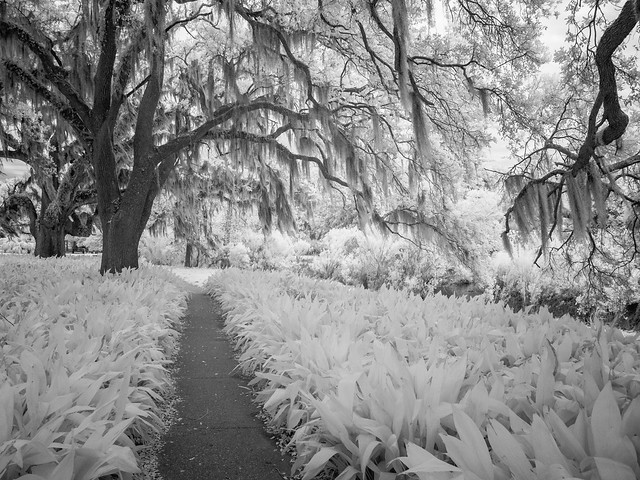
Plans were made in the 1890s to develop the park, which resulted in the eventual construction of landmarks like the Peristyle in 1907 and the Museum of Art in 1911.

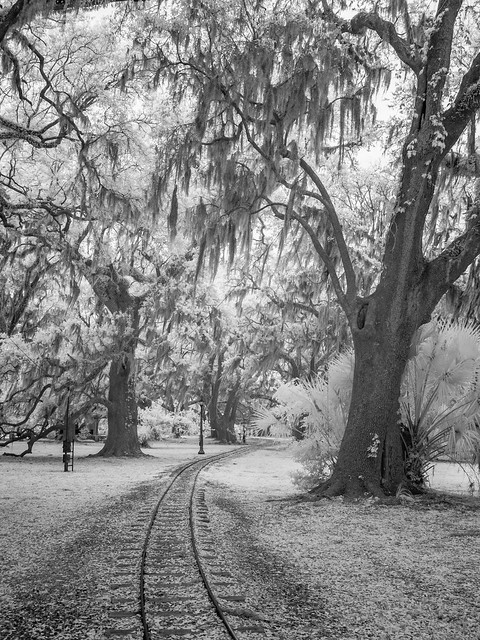

The tracks are for a miniature train that runs for two miles across the park. The train was first installed in 1898.
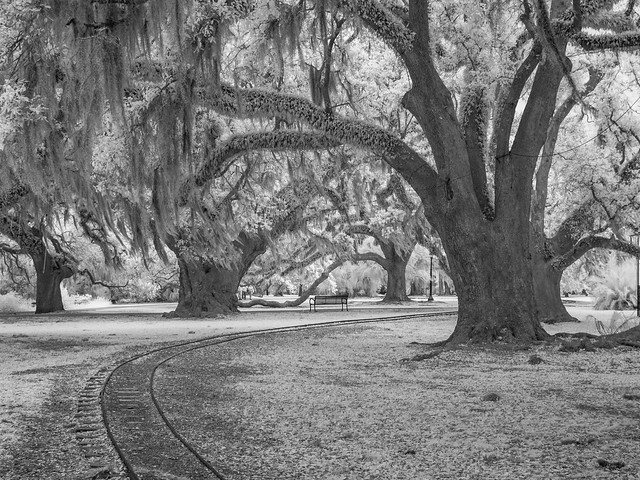
One of the most popular spots for pictures in the park is the old Langles Bridge, which was built in 1902. There were several people in school robes getting their graduation pictures here that afternoon.

City Park is famous for its live-oak trees. The massive and unique trees are synonymous with the Deep South. Their range stretches from the Virginia coast down to Florida, then west towards Texas. They grow well in salty soils and shade, but they are confined to warmer parts of the country because they can't survive in freezing temperatures. They are also almost considered "evergreen" because they don't drop their leaves in the winter. Instead they gradually replace their leaves throughout the year.
New Orleans City Park contains the largest stand of mature live-oak trees in the world, with some trees believed to be over 700-900 years old. Some of the oldest and largest trees have been named. This is the Anseman Oak, which was named after Victor Anseman. He was the first park manager and superintendent back in the 1890s. In the background of this shot, you can see the mini-train passing by.
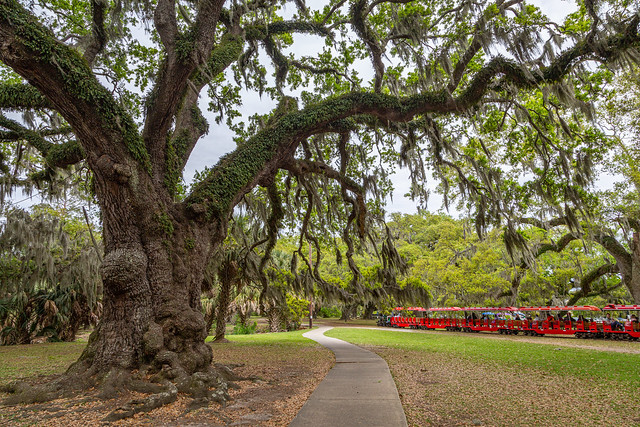
The Anseman Oak is about 700 years old, and stands over 60 feet tall with a crown spread of over 118 feet.
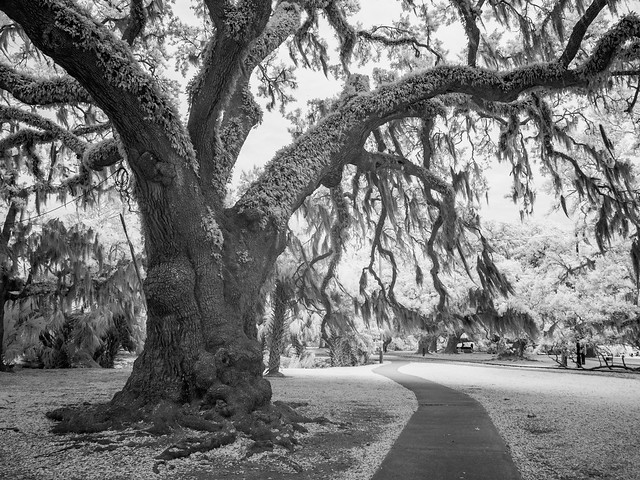
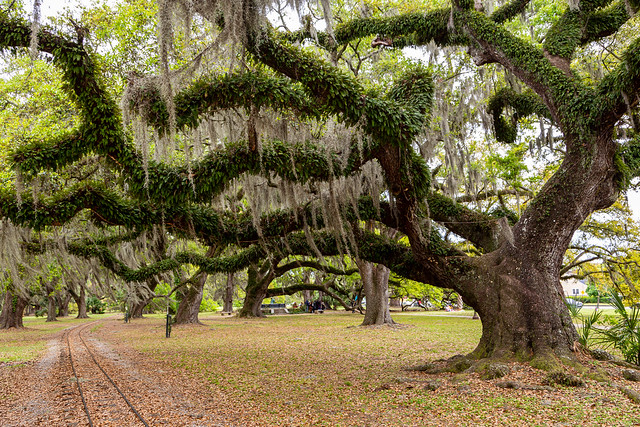
This is the The Butler Memorial Fountain, which depicts a water nymph named Chloe. The bronze statue here was placed in 1929.

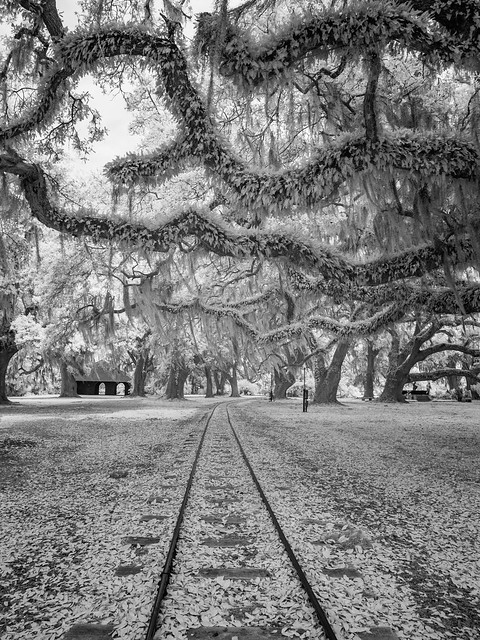
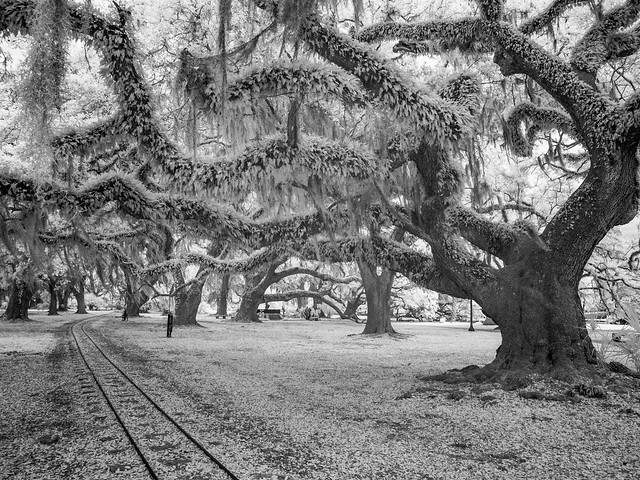
Almost the entire park was flooded in the aftermath of Hurricane Katrina in 2005. The cost of the flooding in City Park alone was $43 million, which included damage to buildings, amusement park rides and electrical systems. Some parts of the park sat under six feet of water for several weeks, which resulted in the deaths of over 2,000 trees and the entire plant collection in the Botanical Garden.
Fortunately many of the park's famous live-oak trees survived the flooding, and the park recovered from the damage.



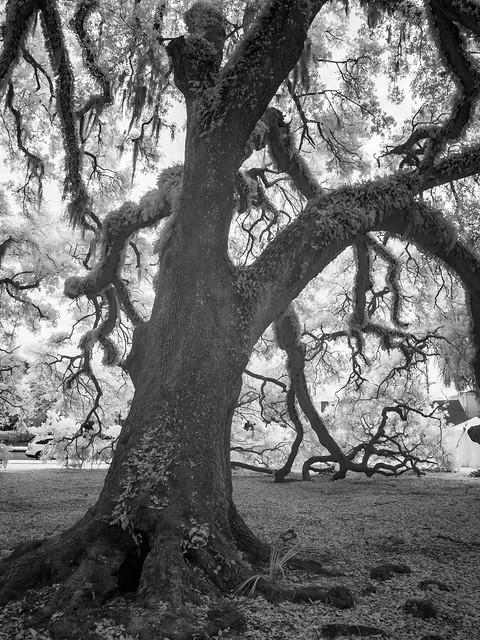
Here is one more shot of the Langles Bridge, taken in a brief time when it was being used for graduation or Quinceanera pictures.


And one last shot from New Orleans City Park. The next day we'd pack up the kids and drive east along the coast towards Florida.


No comments:
Post a Comment